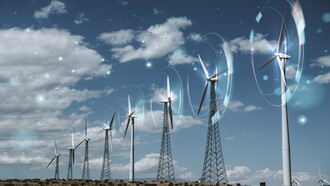Heat waves aren't limited to land ecosystems; oceans also experience them, leading to significant changes in marine life. As is the case with terrestrial heat waves, marine heat waves can last for days and impact the biodiversity and health of aquatic ecosystems, especially coral reefs. Also known as the “rainforests of the sea,” coral reefs house over twenty-five percent of all marine life, even though they account for less than one percent of the ocean floor. Marine heat waves can lead to coral bleaching, a signature sign of dead coral, and shift the dominance from coral to algae, creating potentially toxic algal blooms. These effects could worsen as recent marine heat waves have been recorded as lasting longer and are rising to higher temperatures yearly.
To counteract some of these effects, herbivorous fish play a crucial role in regulating the algal blooms by eating the overgrowth and offer some assistance in restoring the coral reef. However, the fish, too, are victims of marine heat waves. As ectotherms, fish are cold-blooded, and their metabolism and body conditions are regulated by their environment, just like reptiles. To determine how herbivorous fish reacted to marine heat waves, a research team recreated the conditions of a marine heat wave in a laboratory, and they monitored herbivorous fish behavior and consumption of algae.
The manini fish (Acanthurus triostegus) was used in the study because it is an abundant herbivorous fish found in shallow reefs across the equatorial Pacific Ocean. The manini were collected off the coasts near the Hawai’i Institute for Marine Biology and taken to a laboratory setting to acclimate to the new environment. Fish collected during the winter were assigned to the winter experimental group, and those collected in the summer were placed into the summer or marine heat wave experimental groups. The researchers mimicked the temperature conditions for each scenario but within a shorter time. So, the winter group was housed in tanks cooled to 75.2°F (the average for Hawaiian winters) for nine days, the summer group at 81.5°F for nine days, and the marine heat wave group at 87.8°F for twelve days. Two species of algae (Caulerpa sertularioides and Caulerpa verticillate) were grown in the tanks to observe the maninis' feeding habits under different temperatures.
The research team saw an increase in the metabolic rates of manini as the water temperature rose. This led to increased physical activity, as was expected, since they’re cold-blooded. However, to the surprise of the researchers, the manini did not change their eating habits as the temperature rose. At every temperature (even the marine heat wave), the fish only took two to three bites of algae whenever they fed. Despite increased activity in hotter temperatures, the maninis’ eating habits did not keep up with the growing algae. This led to unregulated body mass in the fish experiencing the marine heat wave, while the winter and summer fish could maintain their body mass.
Studies have shown that the plants herbivorous fish eat contain fatty acids and other nutrients that can help them tolerate temperature changes in their environment. The research team notes that the algae in this study may not have been enough to benefit the manini and counteract their reduced eating habits. Combined with their increased metabolisms during hotter temperatures, feeding solely on algae may not be enough for the fish to have the energy to support themselves. However, the team identified that observing the fish in laboratory tanks was another major drawback of the study.
While the fish acclimated to a controlled lab environment, they were no longer exposed to the full range of environmental variables they would encounter in the wild. Competitors and predators were non-existent, and their food source was limited to the algae provided by the researchers, when they may have had different food sources in their natural habitat. With a controlled environment, the fish may have had to adjust their feeding behaviors to match a schedule adhered to by the researchers and not their natural schedule. There’s also the possibility that the algae used in the study, while in the manini natural environment, may also behave differently in real marine heat waves.
Many other possibilities exist for how fish behave in natural environments during marine heat waves. Still, this study reveals that fish may be more affected than initially thought. With their metabolisms increasing during marine heat waves, they spend more energy maintaining body functions while not eating enough to keep that energy. This reduces their capability to focus on feeding and breeding, reducing their population to counteract algal takeovers of coral reefs. Further studies are essential to understand how herbivorous fish respond to marine heat waves in their natural habitats. This research will be crucial to developing strategies for restoring coral reefs and mitigating algal overgrowth after marine heat waves.















